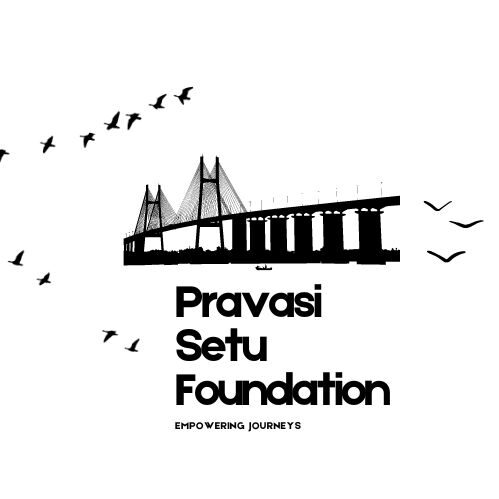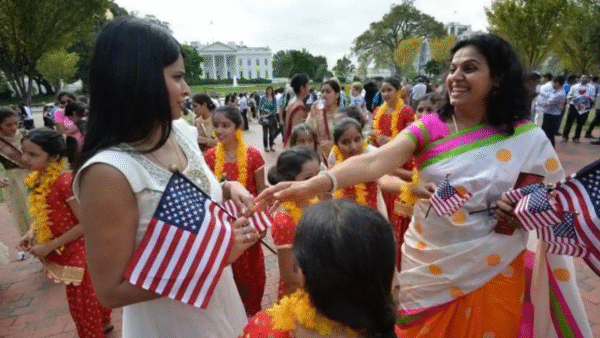Women in the diaspora have played a major part in the long-standing changes in civilizations, economics, and cultures brought about by cross-border migration. Their tenacity and impact have been vital in forming diasporic groups around the world, whether as political influencers, cultural guardians, or economic contributors. Women in the diaspora demonstrate incredible adaptability in the face of systemic obstacles like prejudice, economic instability, cultural displacement, creating identities that connect both their new surroundings and their ancestral homelands. The diaspora’s women play a significant role in the long-term cultural, economic, and civilizational shifts brought about by cross-border migration. In addition, diasporic women have a significant impact on both their home and host nations. Beyond financial transfers, they also make contributions to artistic expression, educational progress, and social and political activism. Many have assumed leadership positions in neighborhood groups, promoting immigrant rights, gender equality, and legislative changes that affect underprivileged groups.
By promoting intercultural understanding and international cooperation, they contribute to the development of more inclusive societies. Diasporic women are still redefining conventional narratives of migration and influence despite historical and modern obstacles. This conversation aims to shed light on their crucial role in the dynamics of the worldwide diaspora by analyzing their experiences, hardships, and accomplishments. Their tenacity and influence bear witness to the ability of flexibility and self-determination to mould identities and promote advancement, both inside and outside of diasporic communities. Knowing their story adds to larger questions on gender, identity, and transnationalism in addition to enhancing talks on migration.
As stewards of customs, languages, and values, women are essential to the preservation of culture in diaspora groups. They guarantee the perpetuation of cultural heritage across generations by their involvement in family structures, social organizations, religious institutions and artistic expressions. In foreign countries, women are frequently in charge of preserving and passing down traditions, ceremonies, and folklore that support ethnic identity. Despite their 10 important achievements, they still struggle to strike a balance between tradition and modernity while negotiating problems, including gender integration, and roles, financial cultural limitations. Family and domestic spaces are among the main ways that women in the diaspora sustain culture. By teaching local languages, telling stories and engaging in traditional practices, parents inculcate cultural values in their children as their primary caregivers. Because it helps newer generations stay connected to their ancestors, language preservation is very important. By involving their children in cultural activities like traditional music, dances, food, and religious rites, mothers frequently take the initiative to ensure that their children develop an awareness of their history.
Cultural identity is celebrated and reinforced through festivals and community events which are frequently planned by women. Women actively participate in social and religious organizations that serve as centers of culture in addition to their roles in families. They establish venues where cultural customs are practiced and transmitted through community centres, mosques, church assemblies, and temple events. To create a sense of community among diaspora members, women frequently take the lead in projects like language classes, workshops for dance and music, and religious education programs. These areas offer chances for solidarity and cross-cultural interaction, particularly for recently arrived immigrants who are looking for comfort and familiarity in unfamiliar settings. Through their artistic creations, women also make a substantial contribution to cultural preservation. In order to preserve and honour their cultural legacy, many women in the diaspora have achieved success as writers, poets, musicians, and filmmakers. The challenges and tenacity of maintaining identity while adjusting to new societies are reflected in the literature produced by diaspora women. The diaspora experience has been given expression by writers such as Edwidge Danticat, Jhumpa Lahiri and Chimamanda Ngozi Adichie, who have written about cultural displacement and legacy. In a similar vein, women’s commitment to teaching and performing dance styles in diaspora groups has allowed them to flourish, including Bharatanatyam, Flamenco, and African drumming. Even with these efforts, women still have a difficult time maintaining their culture when they live abroad. Cultural assimilation, when newer generations may reject old customs because of the influence of mainstream society is one of the main challenges. Women frequently find it difficult to strike a balance between protecting their ancestry and letting their kids grow up in different cultures without losing their roots. Furthermore, because women are expected to maintain customs that may restrict their own liberties, gender roles can occasionally be limiting. Another issue is financial limitations, since many immigrant women work in occupations that require a lot of work and offer little time for cultural pursuits.
Case Study: Ethiopian and Eritrean Women in the U.S.:
Preserving Indigenous Languages and Traditions Through Community Networks Over the past few decades, the Ethiopian and Eritrean diaspora in the United States has expanded dramatically, especially in major American cities like Los Angeles, Minneapolis, and Washington, D.C. In order for future generations to stay connected to their history, women in this community are essential in maintaining indigenous languages and traditional customs. Despite the demands of assimilation, Ethiopian and Eritrean women serve as cultural guardians, transmitting linguistic and traditional 11 information through family networks, religious institutions, organizations. Oral traditions, and community storytelling, and community life have always been highly valued in Ethiopian and Eritrean civilizations. Women have continued these traditions in the United States by creating spaces that support the growth of indigenous languages like Oromo, Tigrinya, and Amharic. They accomplish this through teaching language programs at community centers, conversing with children in these languages at home, and introducing traditional proverbs and folktales into casual conversations. Furthermore, religious institutions have a crucial role in preserving language and culture. Through local language services and events hosted by Ethiopian and Eritrean Orthodox churches, as well as Muslim community groups, younger generations can engage with their heritage.
Language skills are maintained, and cultural values are fostered through religious storytelling by women, who often supervise these religious gatherings and teach young pupils. Traditions are crucially preserved by grassroots projects and organizations run by women. Cultural workshops, traditional dance courses and legacy festivals are organized and taught by women through groups like the Ethiopian Community Development Council (ECDC) and Eritrean American organizations. These forums expose young Ethiopian and Eritrean Americans to artisanal crafts like basket weaving, traditional music, and dances like Eskista. Holiday celebrations, culinary customs, and marriage ceremonies all serve as channels for maintaining cultural continuity. In order to preserve these culinary traditions Throughout the diaspora, women frequently take the lead in making traditional dishes like injera, Doro wat, and tsebhi. An essential component of both Ethiopian and Eritrean culture, coffee ceremonies continue to be a social and ceremonial activity in many homes and community events, encouraging communication and connection across generations. The aim of Ethiopian and Eritrean women in the United States to maintain their language and traditions is fraught with difficulties, despite their best efforts. Younger community members frequently find it challenging to maintain proficiency in their home tongues due to assimilation pressures, English dominance, and generational differences. Language gaps between generations can arise since many immigrant children prefer to communicate in English on a regular basis. Women have responded to this by changing their methods and using contemporary technologies and bilingual education in cultural transmission. Digital storytelling, social media communities, and online platforms have become cutting edge ways to interact with younger audiences. Furthermore, Ethiopian and Eritrean heritage-focused weekend schools and summer camps have grown in popularity, giving kids the opportunity to learn their native tongues in controlled environments.
CONCLUSION
In summary, women are essential to the diaspora’s cultural preservation because they uphold family customs, encourage communal involvement, and support artistic expression. Their tenacity guarantees that cultural heritage endures throughout generations in spite of obstacles including economic hardships, gender norms, and assimilation pressures. By bridging the gap between the past and the present, their work promotes a vibrant, diversified society. In addition to taking care of their children, Ethiopian and Eritrean women in the United States are also vital to the preservation of their culture. Despite the difficulties of 12 migration and integration, they make sure that their rich legacy continues through their efforts in language retention, religious instruction, and community involvement. Their adaptability and tenacity benefit not only their local communities but also the United States’ larger ethnic terrain.
REFERENCES
Makoni, B. (2013). Women of the Diaspora. Gender and language, 7(2), 201-230.
Vatsa, A. (2016). Women in a multicultural diaspora: dilemmas of gender and culture. Diaspora Studies, 9(1), 64-75.
Griffith, R. M., & Savage, B. D. (Eds.). (2006). Women and religion in the African diaspora: knowledge, power, and performance. JHU Press.
Reagon, B. J. (1986). African diaspora women: The making of cultural workers. Feminist Studies, 12(1), 77-90.
Hanum, F., Efianingrumi, A., Manaf, A., & Anwar, M. S. (2025). The role of social capital and self resilience on diaspora well-being abroad. Multidisciplinary Science Journal, 7(7), 2025357-2025357.
Berhane, F. S., & Hepner, T. R. (2024). The Eritrean diaspora in the United States and Italy: securitization, ethnoreligious differences, and political divisions. In Handbook of Migration, Ethnicity, and Diversity (pp. 248–262). Edward Elgar Publishing.


Leave a Reply